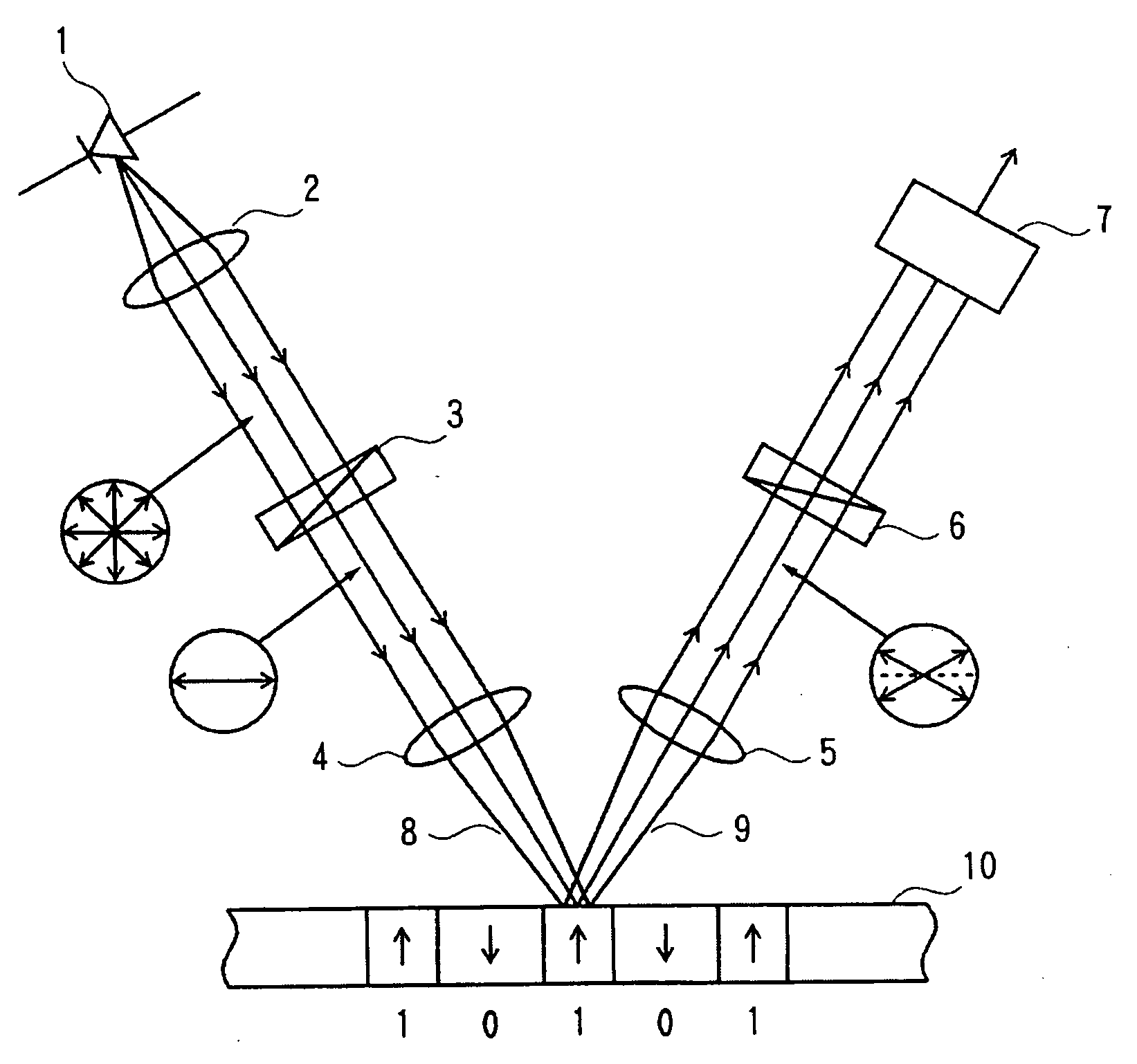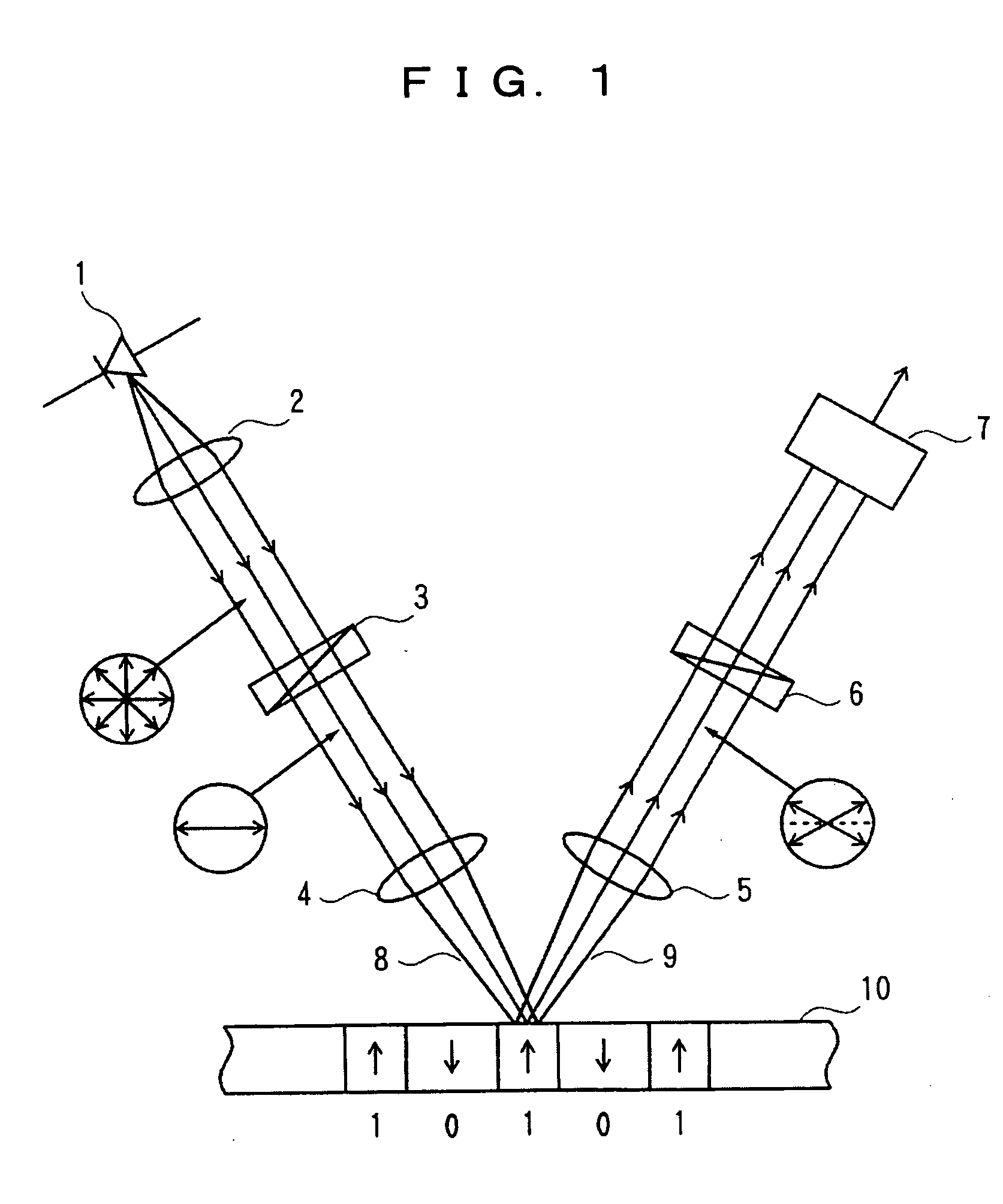Magnetic sensor
- Summary
- Abstract
- Description
- Claims
- Application Information
AI Technical Summary
Benefits of technology
Problems solved by technology
Method used
Image
Examples
first embodiment
[0068] An concrete example having a superlattice structure and used as a magnetic sensor element is shown below.
[0069]FIG. 3 is a sectional view showing the structure of an LSMO magnetic sensor element with a superlattice structure according to the present invention.
[0070] This superlattice employed the (100) plane of SrTiO3 (abbreviated as STO) 201 as a substrate. On this substrate (100) plane, ten molecular layers of La0.6Sr0.4MnO3 (abbreviated as LSMO) 202 were stacked. On these LSMO layers, two molecular layers of LaAlO3 (abbreviated as LAO) 203 and three molecular layers of STO 204 were stacked. The film thickness in a single layer is 3.824 Å for LSMO 202, 3.750 Å for LAO 203, and 3.905 Å for STO 204. With the structure constituted of these molecular layers of LSMO 202, LAO 203, and STO 204 were treated as one unit, ten units thereof were stacked on the above-described structure. The film thickness of the one unit is 57.45 Å, that of the ten units being 574.55 Å. The stacking...
second embodiment
[0087] A concrete example is shown in which a rhombic crystal GaFeO3 is incorporated in a magnetic sensor.
[0088] This crystal has a rhombic crystal structure, and it has a space group of Pc21n according to the classification table of space groups. This crystal has a structure such that the easy magnetization axis thereof constitutes a c-axis, and the polarization axis thereof constitutes a b-axis. The dispositions of this crystal structure, the polarization direction of incident light, and an SHG signal are shown in FIG. 8.
[0089]FIG. 8 is a diagram showing the disposition relationship between the crystal structure of the GaFeO3 magnetic sensor element according to the present invention and laser light. Here, the polarization axis, i.e., b-axis, of GaFeO3 is arranged to be a z-axis, and the easy magnetization axis thereof is arranged to be an x-axis. Laser light is made incident parallel to the b-axis, i.e., along the z-axis direction.
[0090] In FIG. 8, reference numeral 601 denote...
PUM
 Login to View More
Login to View More Abstract
Description
Claims
Application Information
 Login to View More
Login to View More - R&D
- Intellectual Property
- Life Sciences
- Materials
- Tech Scout
- Unparalleled Data Quality
- Higher Quality Content
- 60% Fewer Hallucinations
Browse by: Latest US Patents, China's latest patents, Technical Efficacy Thesaurus, Application Domain, Technology Topic, Popular Technical Reports.
© 2025 PatSnap. All rights reserved.Legal|Privacy policy|Modern Slavery Act Transparency Statement|Sitemap|About US| Contact US: help@patsnap.com



